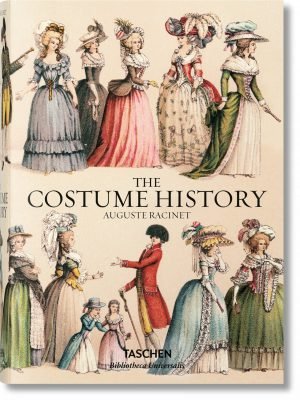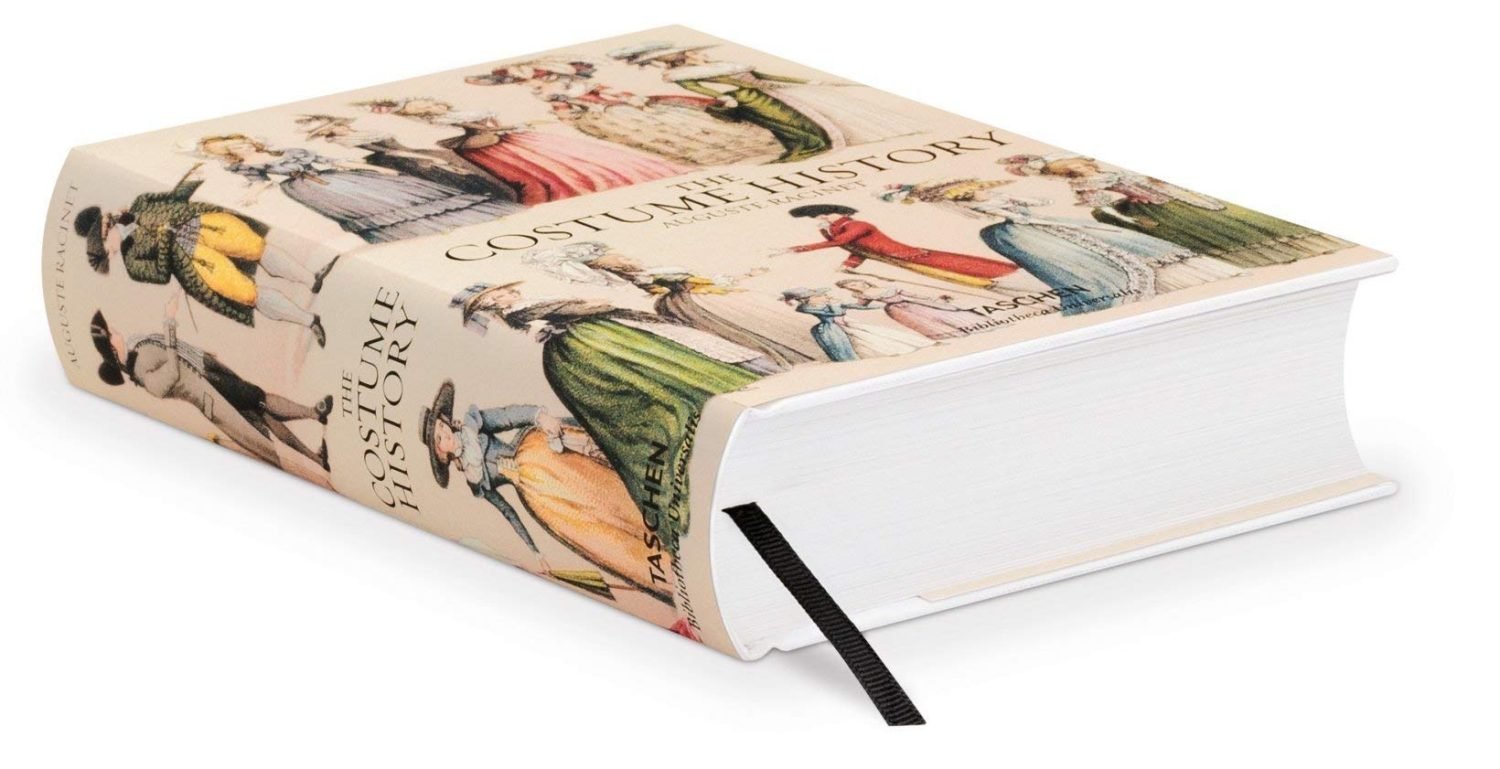
FRANCE XVIII CENTURY. HATS AND WIGS. THE RIDING HORSE.
French styles of the Baroque and Rococo in the 18th century.
The male headgear depicted on this sheet is taken from a work by Baron of Eisenberg published in 1727 with engravings by Bernard Picart on the art of riding.
The shape of the three-cornered hat (à trois cornes, tricorne, triple-masted) that was dominant at the time was determined by the brimmed edges, which soon rose high, then became lower and smaller. When the felt was soft, the brims were attached to the head of the hat and the resulting holes were covered with agraffes and bows. At the edges the brims were either trimmed with feathers or with golden and coloured braids or with braids and feathers at the same time.
After the death of Louis XIV, the old in folio wigs (allonge wig) became more and more limited. The hair at the back was divided into two equal parts, which were knotted together in summer and hung down freely in winter. Gradually the hair was no longer dissolved, and so the perruques à queue and à bourse were created. For the former, nos. 1, 2, 3, 8, 9, 10, 14, 17 are examples. The hair was tied in a bow at the neck and then either fell freely curled down on the back (nos. 6, 14, 9, 10) or it was braided tightly in a braid (nos. 1, 2, 3, 17).
The perruque à bourse takes its name from the taffeta pouch decorated with a rosette of the same fabric in which the lower part of the drooping hair was worn. Since 1710, officers and soldiers have worn this type of wig throughout. Military personnel were also the first to give up wigs altogether and in return to care for their own hair. Even in bourgeois circles, people gradually limited themselves to front toupees, which were fused to the natural hair growth with the help of coarse powder.
The rider in our picture restrains his steed according to the principles of the French-Italian school, which consist of the fact that the use of spurs is only permitted as a means of breeding and that in all other respects the reins and thigh pressure must guide the animal. The most popular colours for horses at that time were shiny black and grey, chestnut and golden brown, burnt chestnut and wine-red chestnut, and isabelline (light muted brown) with black mane and black feet.
Source: History of the costume in chronological development by Auguste Racinet. Edited by Adolf Rosenberg. Berlin 1888.









